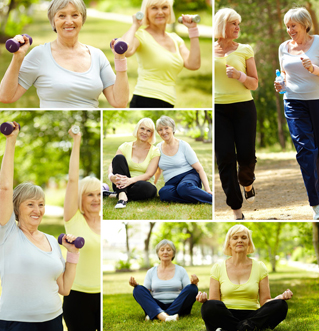
To maintain their health, many older adults focus on exercises and diet, but that’s not enough to cope with balance problems. Physicians recommend balance exercises for fall prevention. Proper balance exercises paired with certain strength exercises can be a great help in preventing falls by improving the body’s ability to control and maintain position. Here are some effective strategies to boost balance:
- Core strength exercises : Physical preparedness with focus on core strength exercises is recommended to prevent falling. The core is basically the midsection of your body and strengthening it helps improve control of the upper and lower extremities, improve balance, and functional performance.
- Physical therapy : This strategy focuses on the ability of the joints and brain to communicate, the balance system in the ear (the vestibular system), and vision. Vestibular rehabilitation (VR), a specialized form of therapy, can help alleviate problems caused by vestibular disorders. This program is mainly designed to reduce vertigo and dizziness, gaze instability, and/or imbalance and falls.
- Balance Walk : This is a simple exercise that can help you walk safely and avoid tripping and falling over objects in your way. Raise your arms to sides at shoulder height, focus on a spot ahead of you and walk steadily. As you walk, lift your back leg and count to 1 before stepping. Repeat the steps 20 times on alternate legs.
- Tai chi and yoga : Research from Temple University showed that women 65 and older who took twice-weekly yoga classes for 9 weeks increased ankle flexibility and had more confidence in walking. Tai chi and yoga exercises make you pay attention to the control and quality of movement, which improves your balance. In tai chi, you practice slow, flowing motions whereas yoga integrates a series of focused postures and breathing exercises. These exercises increase flexibility, range of motion, leg and core strength, and reflexes, which improve balance and help avoid falling.
- Vision correction : If you have an unaddressed vision problem, it would increase your risk of falls. You may not see what’s lying on the floor and will end up losing your balance if you step on to it. That’s why it’s important to pay attention to any vision problems. People 65 or older have an increased risk for eye conditions. So if you are in this age group, make sure you get a comprehensive, dilated eye exam every one or two years.
- Assistive walking devices : Using a cane or walker to complement balance will give you more stability and confidence while walking. Assistive walking devices such as walkers with various handgrips and bases and wheels are available for different types of terrain. They come with lockable brakes, seats, baskets, and other features such as headlights and canes.